Abstract
To facilitate the isolation of anaerobes from cultures in which swarming organisms were present Roux flasks were adapted to provide anaerobic conditions. Using these flasks, five species of anaerobes were isolated from the caecum of mice resistant to colonization with Escherichia coli and other Gram-negative organisms. These species accounted for the majority of organisms seen in films of caecal material. No aerobes were isolated and the flora of these mice apparently consisted of a limited number of anaerobes representing part of the intestinal flora of conventional mice. Three of the species were clostridia and another was identified as Propionibacterium acnes. One species resembled Catenabacterium but was not identified. One of the Clostridium species could only be isolated when the medium was supplemented with yeast extract and vitamins. This species sporulated on media with ammonium phosphate as the source of nitrogen; tryptone completely suppressed sporulation.
Full text
PDF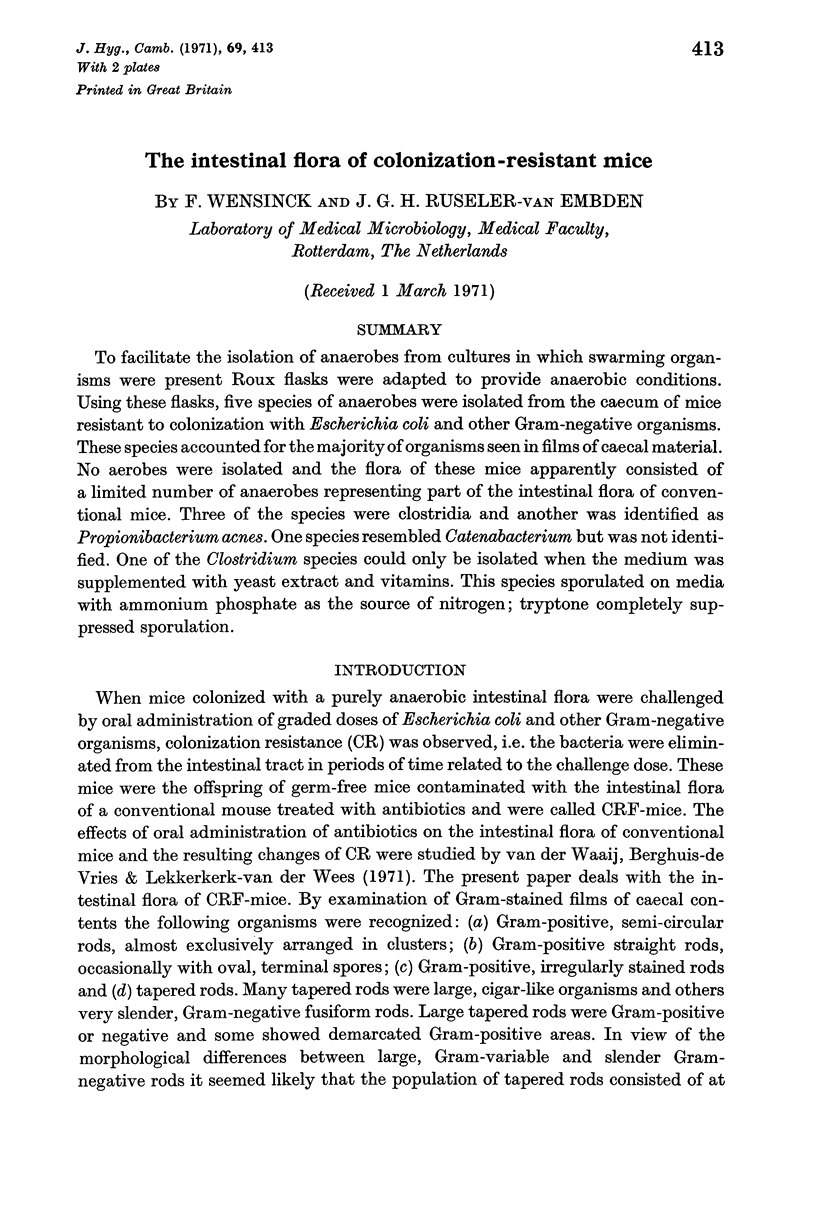
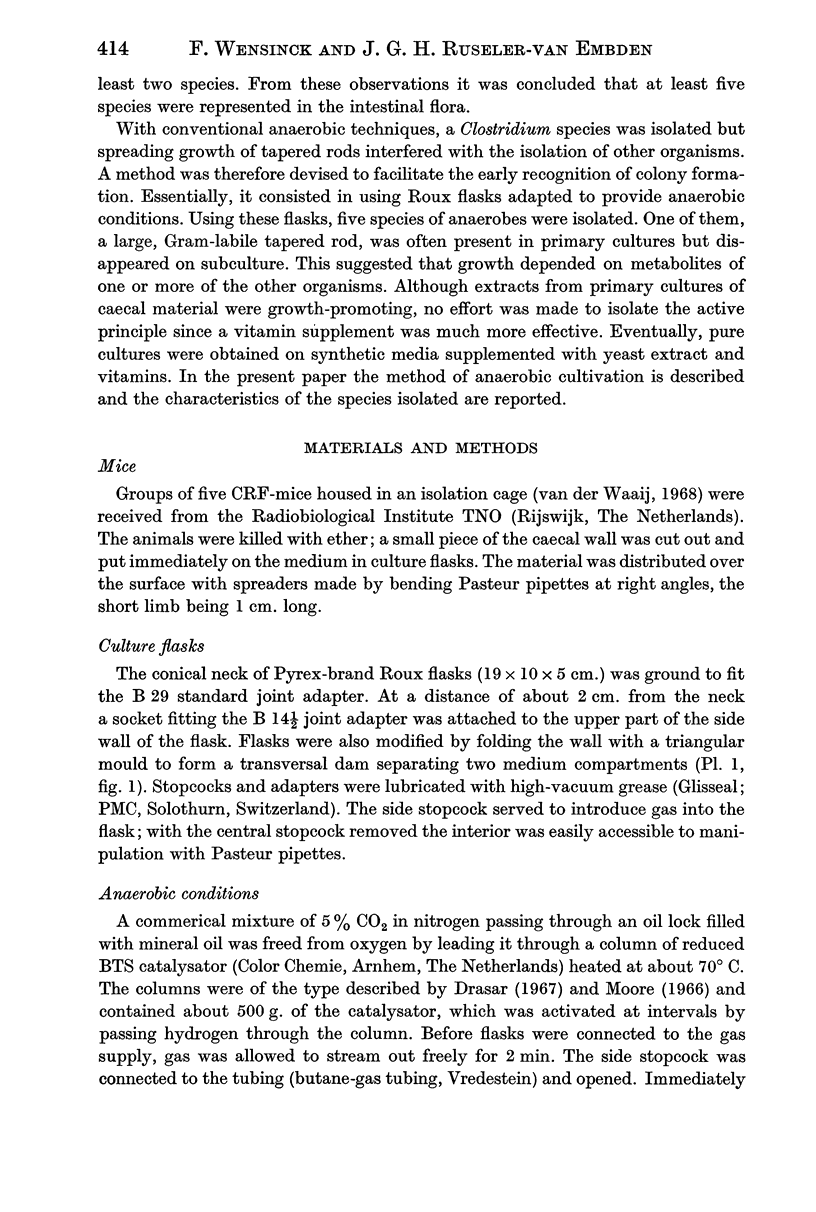

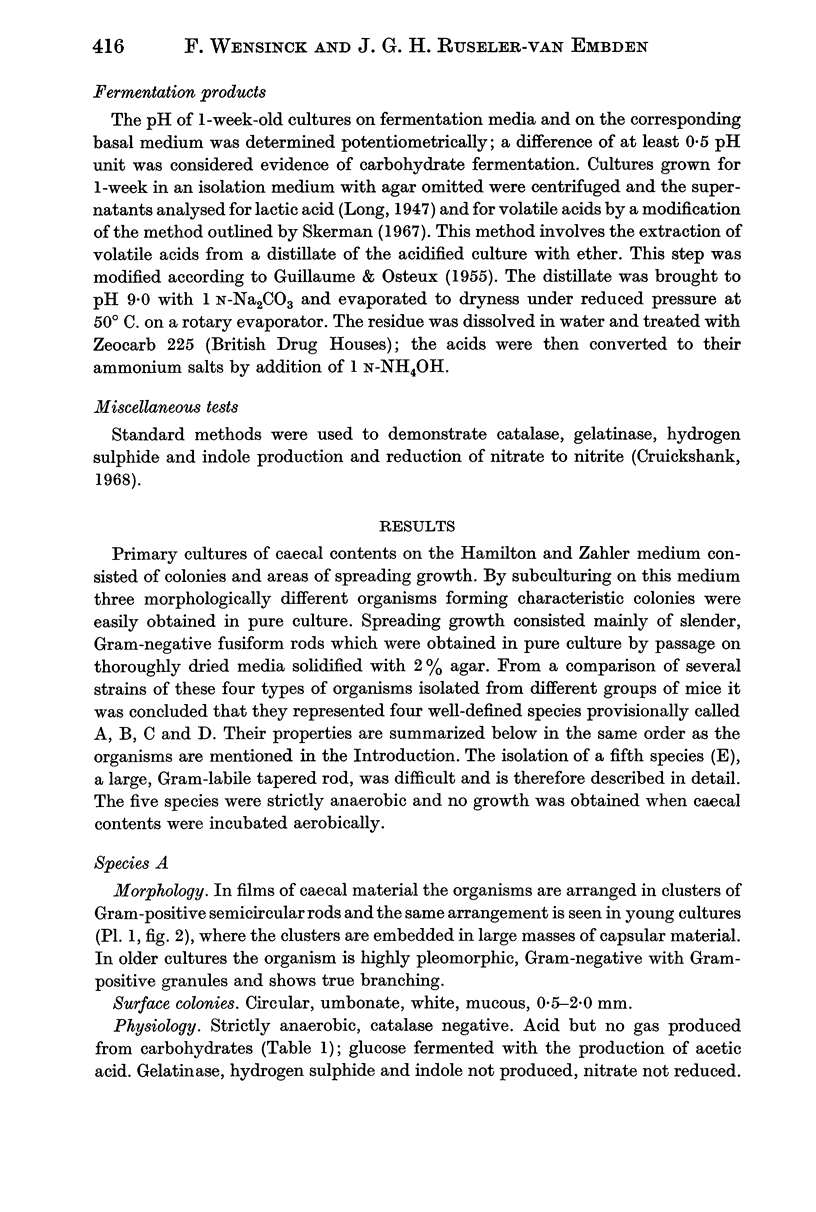
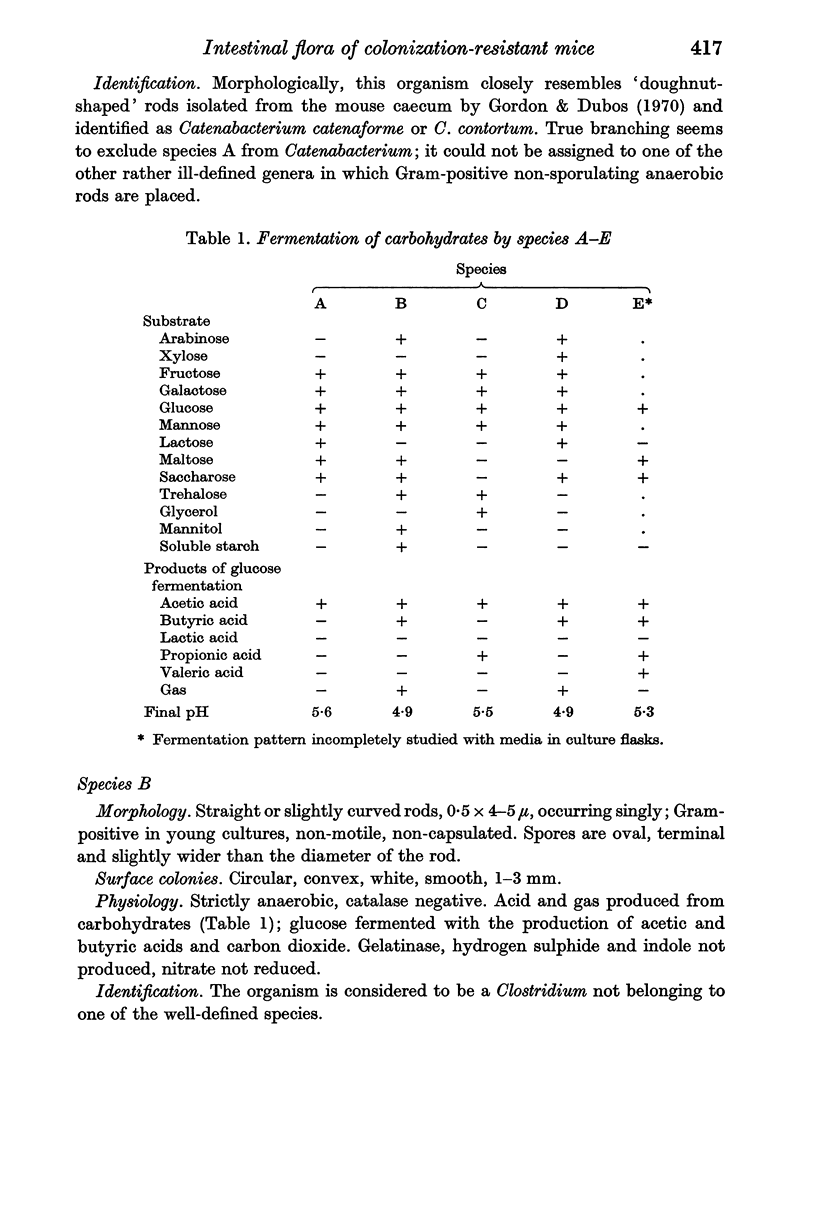
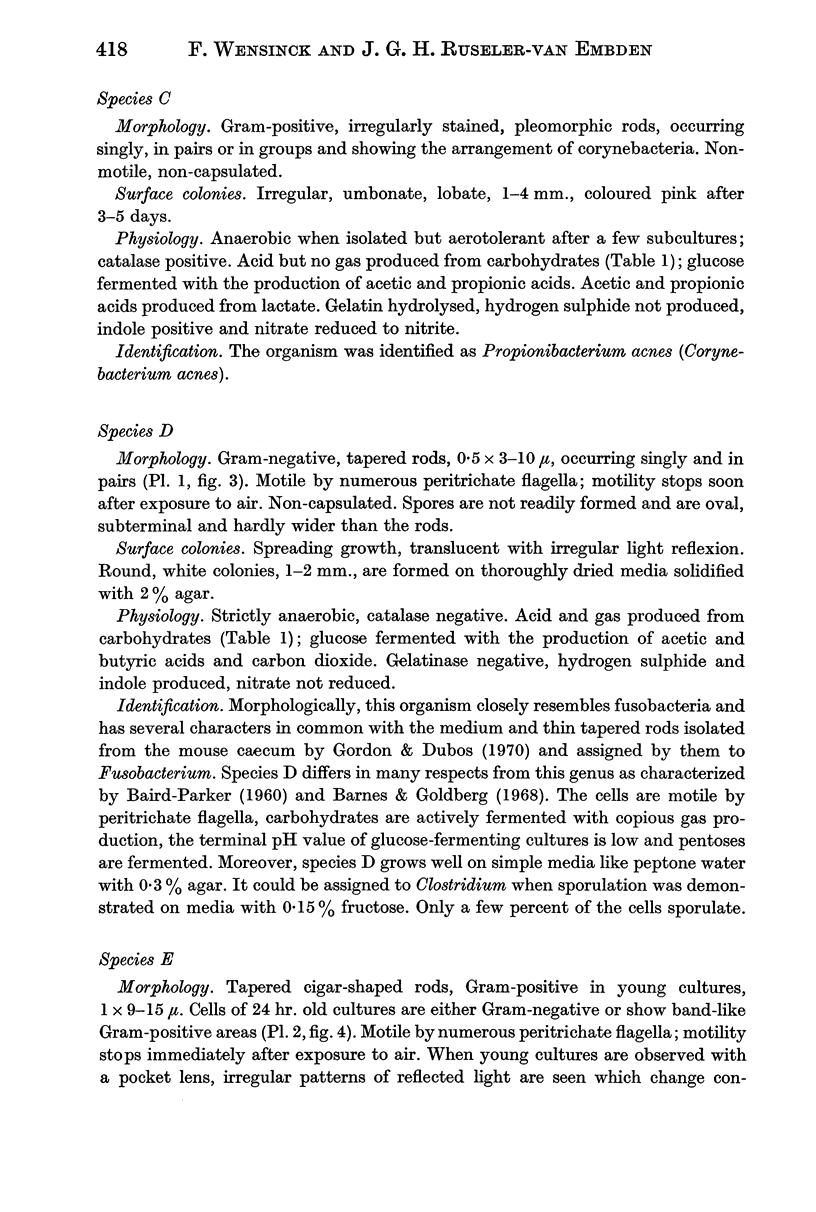

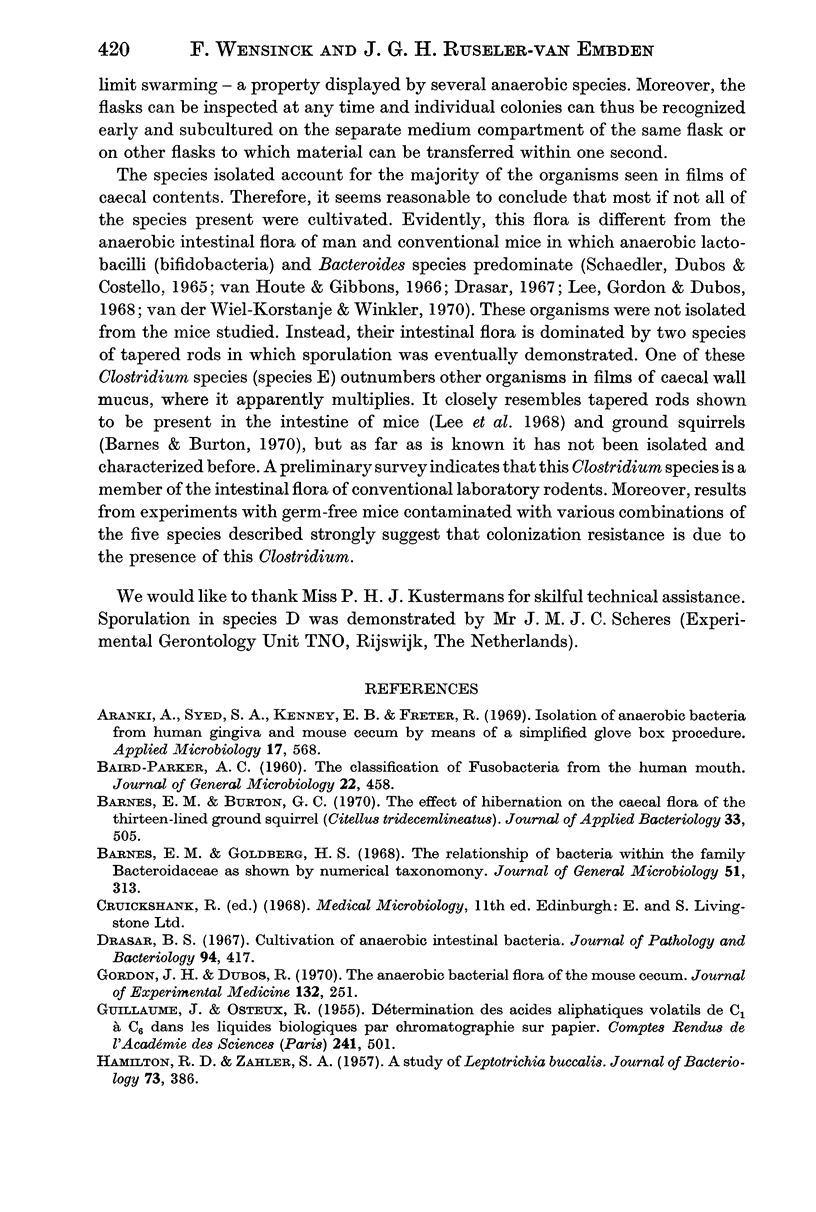



Images in this article
Selected References
These references are in PubMed. This may not be the complete list of references from this article.
- Arank A., Syed S. A., Kenney E. B., Freter R. Isolation of anaerobic bacteria from human gingiva and mouse cecum by means of a simplified glove box procedure. Appl Microbiol. 1969 Apr;17(4):568–576. doi: 10.1128/am.17.4.568-576.1969. [DOI] [PMC free article] [PubMed] [Google Scholar]
- BAIRD-PARKER A. C. The classification of fusobacteria from the human mouth. J Gen Microbiol. 1960 Apr;22:458–469. doi: 10.1099/00221287-22-2-458. [DOI] [PubMed] [Google Scholar]
- Barnes E. M., Burton G. C. The effect of hibernation on the caecal flora of the thirteen-lined ground squirrel (Citellus tridecemlineatus). J Appl Bacteriol. 1970 Sep;33(3):505–514. doi: 10.1111/j.1365-2672.1970.tb02227.x. [DOI] [PubMed] [Google Scholar]
- Barnes E. M., Goldberg H. S. The relationships of bacteria within the family Bacteroidaceae as shown by numerical taxonomy. J Gen Microbiol. 1968 May;51(3):313–324. doi: 10.1099/00221287-51-3-313. [DOI] [PubMed] [Google Scholar]
- Drasar B. S. Cultivation of anaerobic intestinal bacteria. J Pathol Bacteriol. 1967 Oct;94(2):417–427. doi: 10.1002/path.1700940223. [DOI] [PubMed] [Google Scholar]
- Gordon J. H., Dubos R. The anaerobic bacterial flora of the mouse cecum. J Exp Med. 1970 Aug 1;132(2):251–260. doi: 10.1084/jem.132.2.251. [DOI] [PMC free article] [PubMed] [Google Scholar]
- HAMILTON R. D., ZAHLER S. A. A study of Leptotrichia buccalis. J Bacteriol. 1957 Mar;73(3):386–393. doi: 10.1128/jb.73.3.386-393.1957. [DOI] [PMC free article] [PubMed] [Google Scholar]
- Lee A., Gordon J., Dubos R. Enumeration of the oxygen sensitive bacteria usually present in the intestine of healthy mice. Nature. 1968 Dec 14;220(5172):1137–1139. doi: 10.1038/2201137a0. [DOI] [PubMed] [Google Scholar]
- Long C. The stabilization and estimation of lactic acid in blood samples. Biochem J. 1946;40(1):27–33. doi: 10.1042/bj0400027. [DOI] [PMC free article] [PubMed] [Google Scholar]
- Moore W. E., Cato E. P., Holdeman L. V. Anaerobic bacteria of the gastrointestinal flora and their occurrence in clinical infections. J Infect Dis. 1969 Jun;119(6):641–649. doi: 10.1093/infdis/119.6.641. [DOI] [PubMed] [Google Scholar]
- SCHAEDLER R. W., DUBS R., COSTELLO R. ASSOCIATION OF GERMFREE MICE WITH BACTERIA ISOLATED FROM NORMAL MICE. J Exp Med. 1965 Jul 1;122:77–82. doi: 10.1084/jem.122.1.77. [DOI] [PMC free article] [PubMed] [Google Scholar]
- Van Houte J., Gibbons R. J. Studies of the cultivable flora of normal human feces. Antonie Van Leeuwenhoek. 1966;32(2):212–222. doi: 10.1007/BF02097463. [DOI] [PubMed] [Google Scholar]
- Wiel-Korstanje JA van D., Winkler K. C. Medium for differential count of the anaerobic flora in human feces. Appl Microbiol. 1970 Jul;20(1):168–169. doi: 10.1128/am.20.1.168-169.1970. [DOI] [PMC free article] [PubMed] [Google Scholar]
- van der Waaij D., Berghuis-de Vries J. M., Lekkerkerk Lekkerkerk-v Colonization resistance of the digestive tract in conventional and antibiotic-treated mice. J Hyg (Lond) 1971 Sep;69(3):405–411. doi: 10.1017/s0022172400021653. [DOI] [PMC free article] [PubMed] [Google Scholar]







